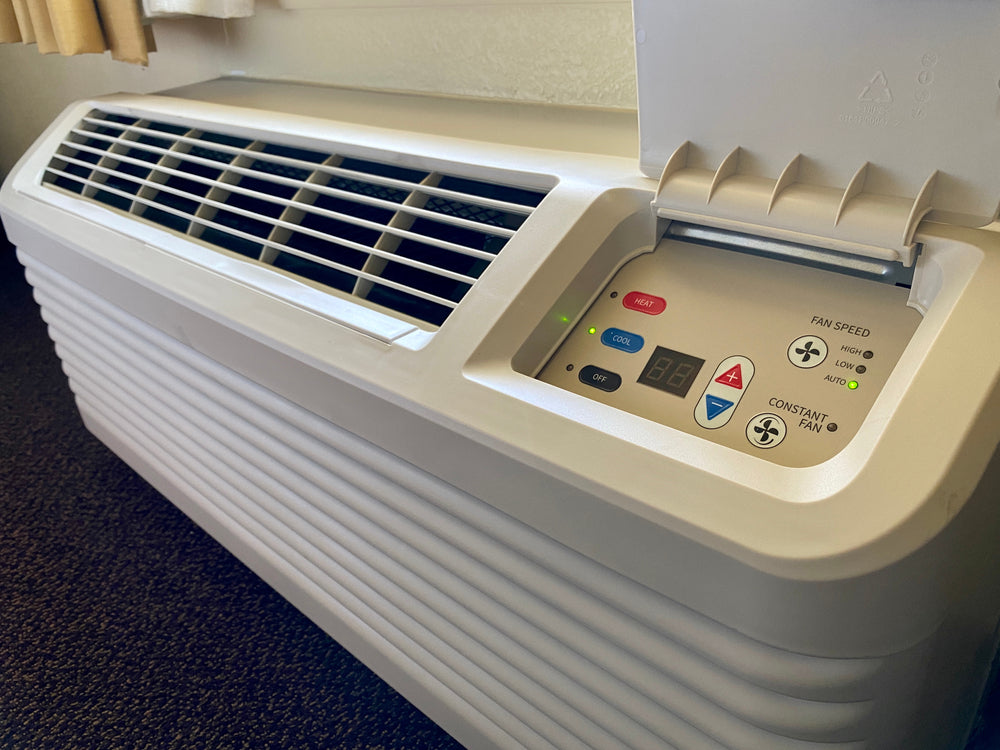Key Components and How They Work in a Through-the-Wall Air Conditioner
Understanding the inner workings of a through-the-wall air conditioner not only helps with proper maintenance but also ensures you're investing in a unit that delivers long-term performance, reliability, and optimal energy efficiency. These systems are compact yet complex, with several integrated components working together to keep your space cool, comfortable, and dehumidified—especially during high-demand summer months.
Let’s break down the key elements that make these wall-mounted units effective cooling machines.
Wall Sleeve and Exterior Venting: The Foundation of the System
Every through-the-wall AC starts with a wall sleeve, which acts as both a structural support and an insulator. Typically made of galvanized steel or aluminum, this rectangular sleeve is permanently installed into the exterior wall and serves as the frame into which the air conditioning unit slides.
The wall sleeve performs several vital functions:
-
Stability and Support: It holds the unit securely and ensures even weight distribution within the wall opening.
-
Sealing and Insulation: It reduces air leakage, enhances thermal performance, and helps maintain the room’s temperature.
-
Ventilation Channel: It allows the rear of the unit (where hot air and condensate exit) to exhaust freely outside, preventing overheating or internal moisture buildup.
Proper installation of the sleeve is critical. A misaligned or poorly sealed wall sleeve can compromise the SEER performance of even the most advanced unit, leading to wasted energy and higher utility costs.
Compressor, Fan, Evaporator Coil, and Control Board: The Cooling Core
Once the wall sleeve is in place, the AC unit can be inserted. Inside the compact chassis are the following components:
1. Compressor
The compressor is the heart of any air conditioning system. It compresses the refrigerant (most modern systems use R-32 refrigerant) and raises its temperature, preparing it for heat release in the condenser coil. R-32’s efficient heat absorption and transfer properties allow for faster cooling and reduced power consumption, contributing to higher SEER ratings.
2. Evaporator Coil
Located near the front of the unit, the evaporator coil receives low-pressure refrigerant from the expansion valve. As the room’s warm air passes over the coil, the refrigerant absorbs the heat, causing it to evaporate. This is where the actual cooling happens—the air is stripped of heat and humidity, delivering a comfortable indoor climate.
3. Condenser Coil and Exhaust Fan
At the rear of the unit sits the condenser coil, which receives the hot, pressurized refrigerant from the compressor. An exhaust fan blows outdoor air over the coil, allowing the refrigerant to release its heat. This cooled, condensed refrigerant is then cycled back to the evaporator coil to repeat the process.
4. Fan System (Blower Fan and Exhaust Fan)
Most through-the-wall units use a dual-fan system:
-
The blower fan circulates indoor air through the evaporator coil and back into the room.
-
The exhaust fan vents hot air outside through the rear of the unit.
These fans often have variable speeds, helping to optimize comfort, noise levels, and energy efficiency.
5. Control Board and Thermostat
Modern units feature an electronic control board that manages everything from compressor timing to fan speeds, energy-saving modes, and smart connectivity. Paired with a digital or Wi-Fi thermostat, this system allows precise control of temperature, humidity, and energy use.
The Cooling Cycle: How Air Is Conditioned Step by Step
To understand how air is actually cooled, here’s a simplified breakdown of the cooling cycle:
-
Warm indoor air is pulled into the front of the unit by the blower fan.
-
This air passes over the evaporator coil, where R-32 refrigerant absorbs its heat.
-
The now cool, dehumidified air is blown back into the room.
-
The heated refrigerant is routed to the compressor, which pressurizes it.
-
The hot, pressurized refrigerant travels to the condenser coil at the rear of the unit.
-
The exhaust fan blows outside air over the coil, removing the heat.
-
The cooled refrigerant is cycled back to the evaporator coil to repeat the process.
This closed-loop system continues until the desired temperature—set on your digital or smart thermostat—is reached. Thanks to modern innovations in compressor technology and the adoption of R-32 refrigerant, today’s through-the-wall units offer faster response times, reduced electrical loads, and better energy efficiency than their older counterparts.
Now that you understand how parts of a Through-the-Wall Air Conditioner work, learn How to Choose the right one for your space!







